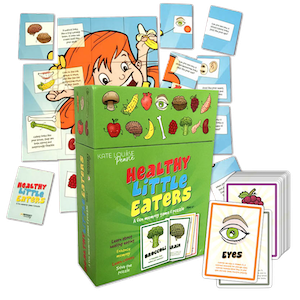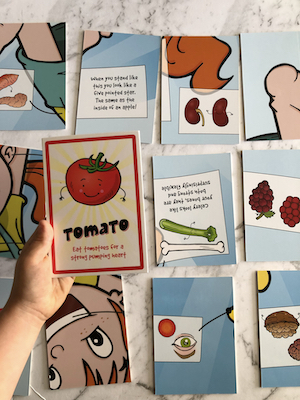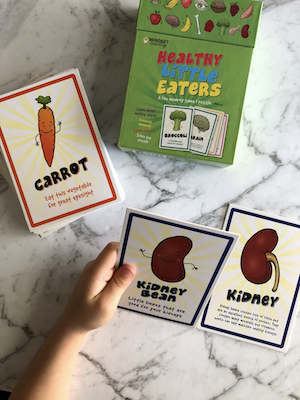Exposure is the shift needed for picky eaters
Fostering healthy eating habits in picky eaters is largely about exposure.
Tired of tantrums at the dinner table and uneaten meals? The key to overcoming picky eaters isn't about pressuring them to try new foods, punishing them for not or succumbing to their restricted food preferences. Fostering healthy eating habits in fussy kids is largely about exposure.
Why children are picky eaters
Picky eating is one of the most common complaints parents face with their young children. Some flat out refuse to eat certain foods and others won't go near any unfamiliar foods. Mealtimes turn into a battle with parents worried about their child's dietary intake and tired of the drama that's tied to a picky eater.
When it comes to fussy eaters there is no one reason why children adopt these eating behaviours. Limited food preferences could be due to nutrient deficiencies, development issues or a disrupted gut microbiome. They may be mimicking the dietary habits of others, testing their independence or fearful of the food itself.
Resolving the true cause of the picky eater can be the step needed to avoid the power struggle over veggies. Working with a nutritionist to assess your child's health in relation to their eating behaviours is imperative, especially if they're displaying symptoms such as underweight, rapid weight gain, fatigue, poor cognitive function or changes in mood.
Repeated exposure may be key
But could the simple act of repeated exposure be the shift that's needed to overcome pickiness in your child?
Over the years, there have been several studies to support the importance of repeated exposure to different foods in the development of children's eating habits. It's well known that it can take up to 20-30 times before a child becomes accepting of a particular food.
Food preferences develop through exposure to specific flavours. The more the individual tastes the unfamiliar flavour, the more likely they're going to accept and even like the food over time. Taste preferences are also influenced by the mother's maternal diet and the first foods introduced when the child was an infant.
What we also know is the strategies of hiding vegetables and masking them with other flavours don’t work to enhance the child's food preferences. It doesn't allow for the child to become familiar with the look, texture, smell or taste of the flavour. Therefore, it doesn't allow them to become comfortable and accepting of the food. Frequent exposure to these unfamiliar foods is essential.
However, feeding research tells us parents typically offer their picky eater a disliked food only three to five times before they give up.
No doubt this is because they don't want the consistent stress and power struggles at mealtimes or simply want to limit the wasted veggies and other healthy foods offered. I hear you, but short term pain leads to long term gain when it comes to young children and their picky eating behaviour.
Tips to increase food exposure
Serving up the same meal only to have it rejected can be disheartening. If you're searching for ways to continually exposure your child to certain foods, here are a few tips to get you started:
Serve unfamiliar or disliked foods at the start of the day when they're awake and alert rather than when they're tired and grumpy.
Try serving veggies raw and cooked in different ways such as steamed, roasted, dehydrated, fermented or grilled.
Present them with a dip such as hummus, homemade tomato sauce, Tamari, yoghurt or guacamole.
Offer the food when they're with their friends.
Put the ingredient it into a different dish - maybe they didn't like it on its own but it a casserole, stir fry, pie or curry it's more appealing.
Try different textures such as grated, mashed, squashed or sliced finely.
Offer only small pea-sized portions initially and slowly increase it as the child becomes more accepting.
Serve the food in a different environment such as in a park, at the play centre, in a restaurant.
Have fun with the presentation making faces, shapes or pictures of the food.
Serve more family-style dinners giving your child the power to put what and how much on their plate.
Take them to a market or a farm to see the food in its whole, natural form.
Make healthy eating fun for the whole family!
Healthy Little Eaters Game designed to educate your child about the benefits of fruit and vegetables.
Through matching games, memory games, quizzes and making a fun puzzle, children will learn the link between fresh wholefoods and body parts. Each fruit or vegetable correlates with a body part.
Get your Health Little Eaters Game here.






